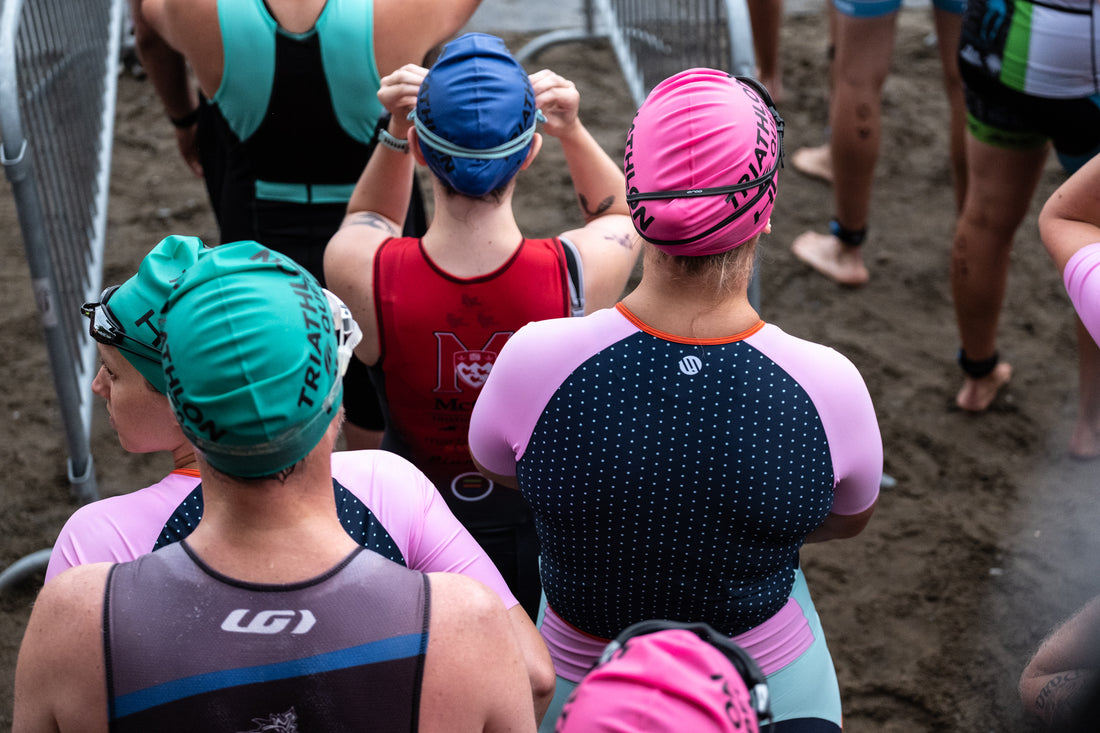Your best race could happen while you’re on your period. Yes. You read that right. When you have a regular menstrual cycle, your hormones are changing in an ongoing cycle. While many women worry that having their period on race day could be their demise, it could be an opportunity. Let’s unpack some menstrual myths so that you can understand your cycle and how to work with it for optimal performance.
Phase I - Menstruation to Ovulation (Follicular Phase)
This portion of your cycle usually lasts for about 10-14 days (based on having 28 days between bleeding). It starts on the first day of bleeding and ends just prior to your ovary releasing an egg. When your bleeding starts, your hormones are at an all time low. You bleed because your hormones have dropped. At this point in your cycle, your hormones are actually supporting your performance. Your pain threshold is higher (you can tolerate more pain), your power and strength are also at an all time high. This is a great time to race, or focus on power building and strength workouts.
Phase 2 - Ovulation to Menstruation (Luteal Phase)
At ovulation, your hormones have started to climb. After ovulation, progesterone and estrogen levels climb up. Increasing progesterone leads to a higher heart rate at rest, which can reduce your threshold for high intensity efforts. High hormone levels can also impact your mood leading to feelings of anxiety or general premenstrual syndrome symptoms (tender breasts, irritability, food cravings) for some women. Higher hormone levels also reduce your pain tolerance and impair muscle recovery. While your training doesn’t have to shift to accommodate your hormones, you may focus on recovery during this time and add in some extra foam rolling or mobility work in addition to increasing your protein intake to support your muscles.
Based on where you are in your menstrual cycle, there are different behaviours that can help you perform at your peak. By following the 5 steps below you can improve your body’s ability to cope with the natural fluctuations of your hormones.
-
Poop. You need to poop at least once a day. If you’re constipated or going less than once a day, something’s got to change! One of the body’s main ways of getting rid of hormones is in the stool. Start by drinking more water and increasing your fruit and vegetable and whole grain intake as dehydration and a low fibre diet can cause chronic constipation.
-
Get some good bacteria. Your gut is the home to billions of healthy, helpful bacteria. These little guys actually help to chew up estrogen1 and improve your body’s ability to get rid of it in your stool. Try taking a probiotic supplement or increase your consumption of fermented foods such as kimchi, sauerkraut or kombucha tea.
-
Eat your veggies. Cruciferous vegetables from the brassica family like kale, cauliflower, broccoli, brussels sprouts and cabbage contain an estrogen busting phytochemical called indole-3-carbinol which converts to 3,3’-diindolylmethane (DIM) in your body2. Enjoy these veggies lightly steamed, sautéed to protect your thyroid function if you’re eating lots of them everyday.
-
Omega 3’s. Essential fatty acids, specifically EPA, can have a positive impact on mood, depression and anxiety. These friendly fats can also help with constipation, inflammation and healthy hormone synthesis. Omega 3’s are the building blocks of healthy cell membranes and anti-inflammatory molecules. You can get omega-3’s from flaxseeds and salmon by consuming these foods daily if possible. Supplements are also available.
-
Craving chocolate? You might be missing magnesium! This mighty mineral is a natural spasmolytic which means it can work acutely for menstrual cramps, muscle cramps (like restless legs at night) or any kind of cramping pain. Magnesium is also a calming nutrient and can be used at bedtime to initiate sleep or in times of anxiety to calm the nerves without sedating. Watch that you don’t dose your magnesium too high, the most common side effect is diarrhea and it could have you running to the washroom.
Your hormones should never hold you back. While it’s true that performance can vary with the natural highs and lows of hormones, this knowledge is best used as a guide. Understanding how your performance may be impacted at different times of your cycle, can help you understand what’s going on if your performance is worse (or better!) than expected. Never beat yourself up, it might be hormones, not your fitness level contributing to a change in your performance. If you have very heavy or painful periods, or your premenstrual symptoms are severe and/or lasting more than a week prior to menstruation, then you need to get some help! See your naturopathic doctor or primary care provider to get some solutions.
Written by: Dr. Briana Botsford, ND is a Naturopathic Doctor, women’s health and performance expert in Edmonton, Alberta. She works with athletes, active people and average people to achieve their health goals, treat disease and perform at a high level in sport and in life.
References:
1. Baker JM., Al-Nakkash L., Herbst-Kralovetz MM., (2017, September). Estrogen-gut micro biome axis: Physiological and clinical implications. Maturitas. Retrieved from: https:// www.maturitas.org/article/S0378-5122(17)30650-3/fulltext
2. Auborn KJ, Fan S, Rosen EM, Goodwin L, Chandraskaren A, Williams DE, Chen D, Carter TH. (2003, July). Indole-3-Carbinol is a negative regulator of estrogen. Journal of Nutrition. Retrieved from: https://www.ncbi.nlm.nih.gov/pubmed/12840226#




